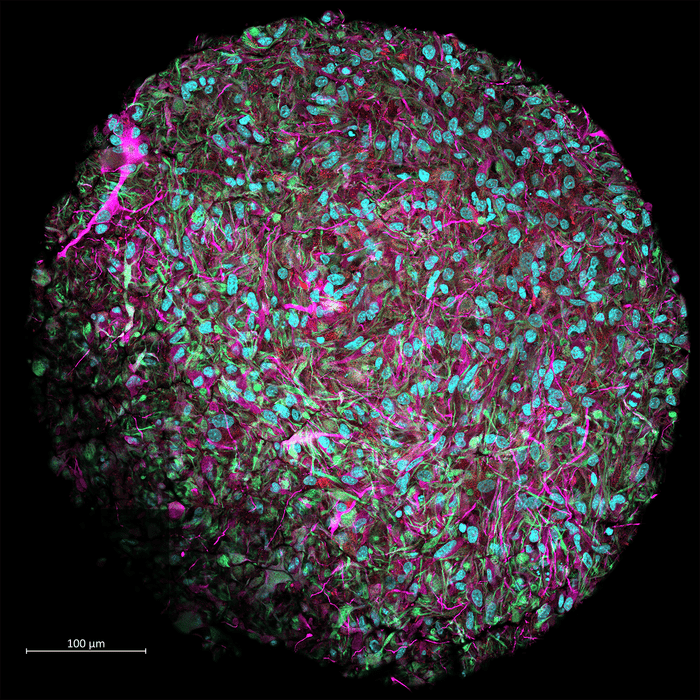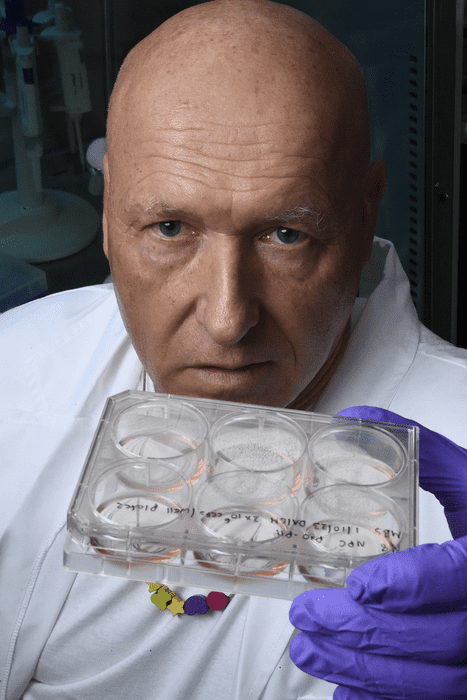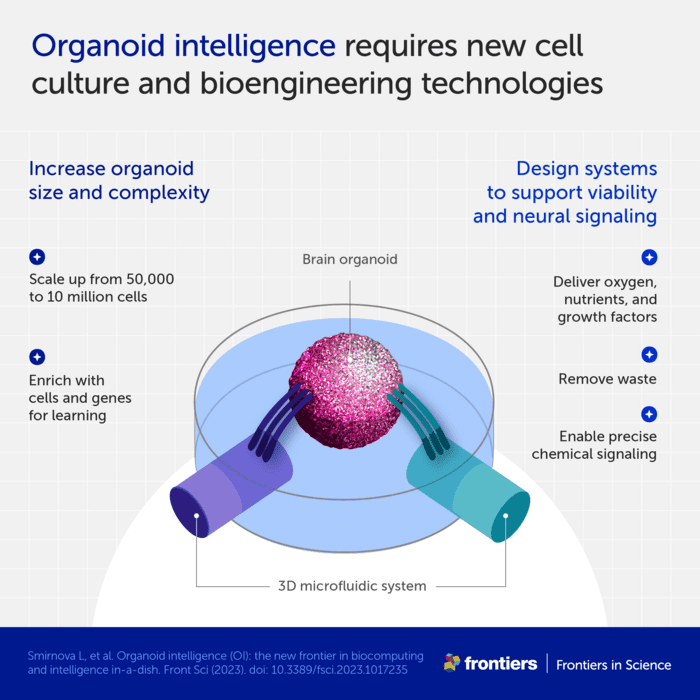
Everyone is freaking out over artificial intelligence systems and their potential to disrupt, well, everything really. But this tunnel vision shouldn’t distract us from what can be achieved by tapping into natural intelligence, which is orders of magnitude more capable in some areas of computing than the biggest, meanest AIs and supercomputers.
Now, imagine how extraordinary it would be if we could somehow combine the raw computing power and precision of silicon-based computers with the cognitive abilities of the human brain. But is such a thing even possible? Indeed it may be, according to an international group of leading scientists who outlined their plan for so-called “organoid intelligence” (OI) enabled by biocomputers that use actual human brain cells rather than transistors to store, retrieve, and process information.
Move over AI: meet OI
When people see computers defeat human masters with a breeze in complex games, such as chess in the 1900s or more recently at Go, it’s easy to fall into the trap of thinking that they are superior to us in all manners of thinking — not so.
Let’s start off by recognizing the fact that there are many similarities between the architecture of the brain and that of a computer, as both consist of largely separate circuits for input, output, central processing, and memory. This is of course by design as the pioneers of computing modeled artificial thinking machines based on the human brain. For instance, the brief but profound book The Computer and the Brain by the brilliant and unequaled John von Neumann in the 1940s is still the basis of most modern computers.
However, there are also profound differences between the two architectures, one silicon-based, the other biological. Computers can make computations at least 10 million times faster than the human brain. The precision of computations done by humans is around 1 in 100, whereas a 32-bit processor has a precision of 1 in 4 billion. If you want to crunch raw numbers and data, computers are unequaled.
But ask a computer whether the image of a four-legged creature represents a giraffe or a horse and it will be in trouble. Or imagine a basketball player following the trajectory of a ball that is passed and moved around the court, all while constantly contracting hundreds of individual muscles to move their limbs precisely and in coordination with other players. These are all trivial tasks for humans but can be almost downright impossible in some cases for computers. Moreover, the human brain achieves all of this at a fraction of the power consumption of a digital computer.
Over the past decades, computer scientists and engineers have tried to bridge this gap by adding more features of the human brain to computer design. The principles of parallel processing and use-dependent modification of connection strength have been incorporated into modern computers through the use of multiple processors, or cores, in a single computer. Deep learning algorithms that allow machines to identify objects or speech are directly inspired by the systems in the mammalian visual and auditory cortexes.
But these emulations may be reaching their limits, which is where organoid intelligence comes in.
What is organoid intelligence?

Scientists have been experimenting with growing three-dimensional cultures of brain cells, called brain organoids, for some time now. Technically, these are ‘cerebral organoids’ — artificially grown, in vitro, miniature organs resembling the brain. These cell cultures have proven to be fantastic tools for probing some aspects of the human brain, including how neurons fire and make connections. They’re also prime testing grounds for drug development and understanding how some neurological diseases, such as Parkinson’s or Alzheimer’s, affect the human brain.
But more recently, the prospect of using brain organoids as biocomputers has become increasingly appealing. Last year, for instance, scientists at the biotech startup Cortical Labs built a brain-organoid-computer hybrid that was able to learn to play the classic video game Pong. Elsewhere, researchers combined 2D-neuron cultures with computer chips.
It all starts — oddly enough — with a bunch of human skin cells. The donated cells are planted on a culture dish where genes are driven into the skin cells that essentially erase their memory of having ever been skin, reprogramming them into stem cells that have the potential to become any cell type in the human body, whether it’s hair follicles, liver cells, or neurons.
By bathing stem cells in certain chemicals, scientists can guide the fate of these cells toward developing into neurons. When these cells are injected inside a gel-like matrix, it is possible to grow brain cells in three dimensions, thereby massively increasing the density of neurons of the organoid. These structures loosely resemble the developing human brain, including the presence of tentacular axons that link up with dendrites to form branching synapses.
The potential is there, which is why a group of more than 80 leading researchers has now proposed a roadmap for realizing a vision in which brain organoids form the basis for a new type of computing that uses biological hardware.
“We are at a moment in time, where the technologies to achieve actual biocomputing have matured to be synergistically combined. This release marks the formation of an Organoid Intelligence (OI) community to do this. The hope is that some of the remarkable functionalities of the human brain can be realized as OI, such as its ability to make fast decisions based on incomplete and contradictory information (intuitive thinking), continuous learning, and data- and energy-efficiency,” Thomas Hartung, a professor of environmental health sciences at the Johns Hopkins Bloomberg School of Public Health and Whiting School of Engineering who is spearheading the new initiative, told ZME Science over email.

In the new study that appeared today in Frontiers in Science, the authors showcase the current state of the art in OI and outline various developing technologies used to interface with, augment, and enhance the organoids. These include interdisciplinary tools from diverse fields, such as bioengineering and machine learning.
“When I announced at AAAS in 2016 that we achieved the standardized mass-production of brain organoids, I characterized their spontaneous electric activity as “they are thinking”. Some attendants were shocked by this and asked whether they are conscious. I answered they can’t be as they have nothing to think about without input and output. This is what we are changing now,” said Hartung, who boldly believes biological computing is the “likely future generation of AI”.
Besides supercharging computing, OI also has a massive disruptive potential in healthcare and neuroscience. By directly probing organoids, scientists can study how memories form in the brain, but also how debilitating and (currently) incurable diseases like Alzheimer’s cause the disintegration of these memories.
But before this vision can be fully brought to bear, there are many challenges that need to be solved. In 2012, Hartung’s team assembled brain organoids made up of around 50,000 cells, which is about the size of the fruit fly’s nervous system. However, achieving the same type of computing power seen in computers today would require millions if not billions of neurons. It might take decades before OI can be as smart as a mouse.
“Currently, we must scale these organoids, which requires oxygen and nutrient supply, and we must interface them with as many electrodes as possible. Actual biological AI competitive to current silicon-based AI is certainly far away, if ever achievable. However, we can learn a lot about the biology of cognition, define the ethical boundaries of such research, use them to develop drugs or understand negative effects of chemicals in our environment and possibly complement traditional computers with biological components,” said Hartung.
Are brain organoids ethical?
At the current stage in which this research is right now, there should be no moral concerns over using these organoids. There’s essentially zero chance that these 3-D blobs of neurons are conscious, especially considering that the level of abstraction required to achieve consciousness is, from what neuroscientists know at the moment, predicated on having sensory input. A bodiless brain organoid — which isn’t actually a brain yet — with very limited sensory information relayed by some electrodes cannot ever achieve consciousness, but Hartung nevertheless is actively involving ethicists in all steps of this process, which he calls ’embedded ethics’.
If Hartung’s vision is ever achieved, the prospect of dish-grown ‘tiny brains’ becoming conscious — though still remote — will become increasingly possible.
“At this moment, we are far away from any level of actual consciousness – the organoids are tiny with about as many neurons as a housefly and hardly any relevant input to learn about their environment (and themselves). However, it is critical to anticipate how this might change and define the boundaries. We are actively involving ethicists in the team. Our “embedded ethics” approach involves them as observers and sounding boards of our work. At the same time, they survey the general public to understand, what makes them possibly uneasy about this work and what information helps them to understand its value and the ethical responsibility taken,” the scientist added.
The human brain, in all its staggering complexity, is the product of millions of years of evolution. Tapping into this huge potential could be absolutely transformational. Many challenges lie ahead, but this new roadmap should help scientists coordinate better in order to make this vision reality. Hartung mentions that there is now a fledgling OI community thanks to initiatives like a 2022 Johns Hopkins workshop that eventually led to the development of the Baltimore Declaration toward OI, which will be published shortly.


